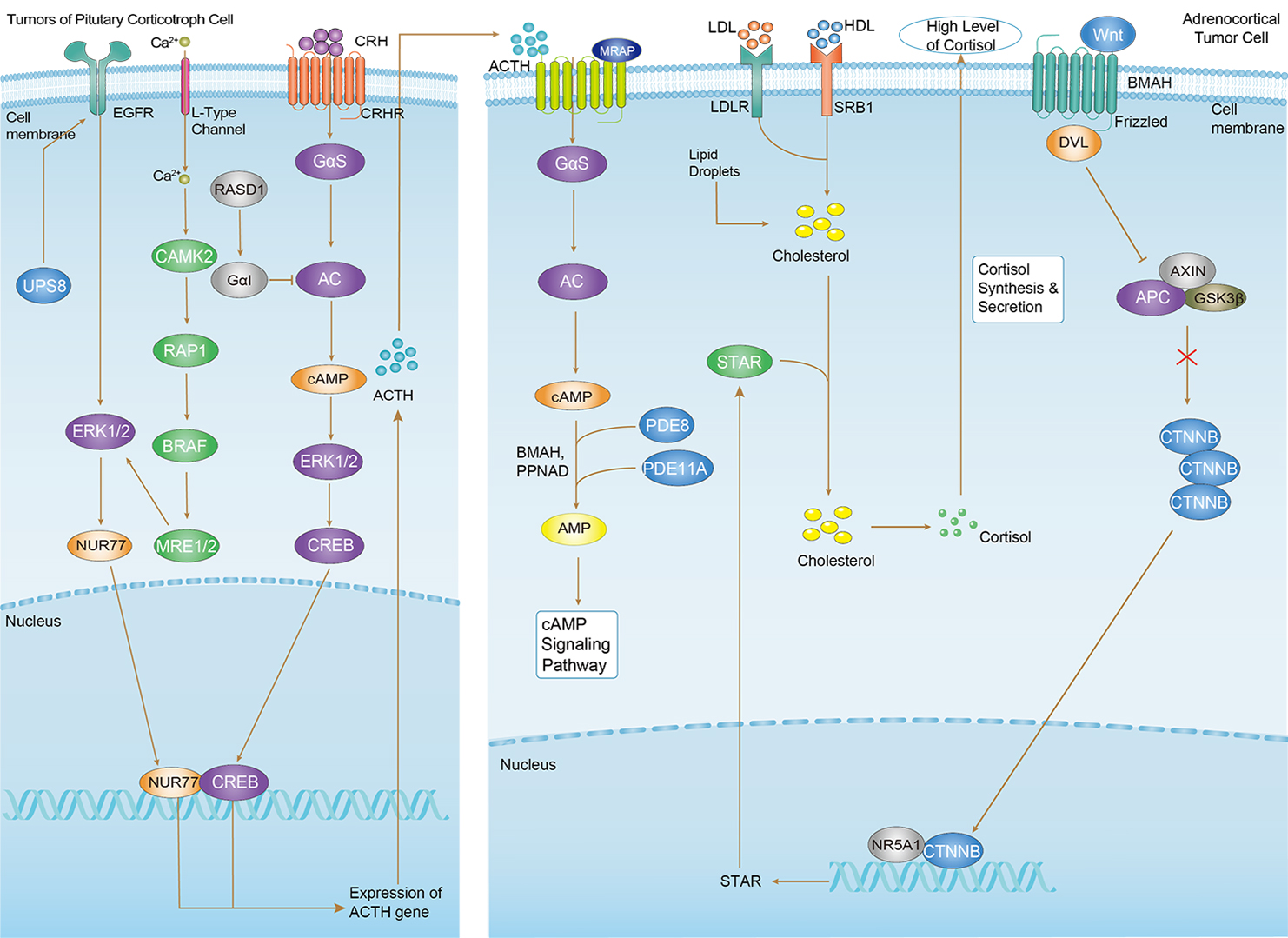Anti-Mouse CTNNB1 Immunohistochemistry Kit
CAT#: VS-0525-XY1770
The CTNNB1 IHC kit is designed for detecting beta-catenin, a key player in cell adhesion and Wnt signaling. Suitable for both paraffin and frozen sections, this kit provides clear and reproducible staining across species, supporting cancer, developmental, and cell signaling research.











Specifications
- Application
- IHC
- Size
- 50 Tests
- Species Reactivity
- Human, Mouse, Rat
- Target
- CTNNB1
- Primary Antibody
- Rabbit Anti-CTNNB1 Antibody
- Secondary Antibody
- Goat anti-Rabbit Antibody, HRP
- Sample Type
- FFPE tissue; Frozen section tissue
- Kit Storage
- All reagents should be kept at 2-8°C. The kit remains stable for up to 6 months after arrival.
Customer Review
There are currently no Customer reviews or questions for VS-0525-XY1770. Click the button above to contact us or submit your feedback about this product.
Submit Your Publication
Published with our product? Submit your paper and receive a 10% discount on your next order! Share your research to earn exclusive rewards.
Related Diseases
Downloadable Resources
Download resources about recombinant antibody development and antibody engineering to boost your research.
Datasheet
MSDS
COA
Certificate of Analysis LookupTo download a Certificate of Analysis, please enter a lot number in the search box below. Note: Certificate of Analysis not available for kit components.
Protocol & Troubleshooting
We have outlined the assay protocols, covering reagents, solutions, procedures, and troubleshooting tips for common issues in order to better assist clients in conducting experiments with our products. View the full list of Protocol & Troubleshooting.
See other products for "CTNNB1"
Select a product category from the dropdown menu below to view related products.
| CAT | Product Name | Application | Type |
|---|---|---|---|
| MOB-247-F(E) | Recombinant Anti-human CTNNB1 Antibody Fab Fragment | ELISA, Nert, FuncS | Fab |
| MHH-247-F(E) | Recombinant Human Anti-human CTNNB1 Antibody Fab Fragment | ELISA, WB, Neut, FuncS | Fab |
| PSBZ-140 | Mouse Anti-CTNNB1 Recombinant Antibody (clone BC-22); scFv Fragment | ELISA, Block | Mouse scFv |
| CAT | Product Name | Application | Type |
|---|---|---|---|
| MOB-247-S(P) | Recombinant Anti-human CTNNB1 Antibody scFv Fragment | ELISA, WB, IP, FuncS | scFv |
| MHH-247-S(P) | Recombinant Human Anti-human CTNNB1 Antibody scFv Fragment | ELISA, IP, FuncS | scFv |
| PFBZ-140 | Mouse Anti-CTNNB1 Recombinant Antibody (clone BC-22); Fab Fragment | ELISA, Block | Mouse Fab |
| CAT | Product Name | Application | Type |
|---|---|---|---|
| NABG-049 | Recombinant Anti-Mouse Ctnnb1 VHH Single Domain Antibody | ELISA, IHC, FC, FuncS | Llama VHH |
| CAT | Product Name | Application | Type |
|---|---|---|---|
| MHH-247 | Recombinant Human Anti-human CTNNB1 Antibody | ELISA, FuncS | IgG |
| MOB-0264MZ | Recombinant Mouse Anti-Human CTNNB1 Antibody (clone γ-Catenin-1) | IHC | Mouse antibody |
| MRO-1692-CN | Rabbit Anti-CTNNB1 Polyclonal Antibody (MRO-1692-CN) | WB, IHC, FC | Rabbit IgG |
| ZG-0052J | Mouse Anti-CTNNB1 Recombinant Antibody (ZG-0052J) | IHC-P, IF | Mouse IgG |
| ZG-0053J | Mouse Anti-CTNNB1 Recombinant Antibody (ZG-0053J) | IHC-P, IF | Mouse IgG |
| CAT | Product Name | Application | Type |
|---|---|---|---|
| MOR-0859 | Hi-Affi™ Rabbit Anti-CTNNB1 Recombinant Antibody (clone DS859AB) | WB | Rabbit IgG |
| MOR-0039-FY | Rabbit Anti-CTNNB1 Recombinant Antibody (clone AFY0010) | ICC, IHC-P, WB | Rabbit IgG |
| CAT | Product Name | Application | Type |
|---|---|---|---|
| NS-008CN | Mouse Anti-CTNNB1 Recombinant Antibody (clone 13C6) | ELISA, IHC | Mouse IgG1 |
| NS-008CN-F(E) | Mouse Anti-CTNNB1 Recombinant Antibody (clone 13C6); Fab Fragment | ELISA, IHC | Mouse Fab |
| NS-008CN-S(P) | Mouse Anti-CTNNB1 Recombinant Antibody (clone 13C6); scFv Fragment | ELISA, IHC | Mouse scFv |
| CAT | Product Name | Application | Type |
|---|---|---|---|
| VS3-QX299 | Mouse Anti-CTNNB1 Recombinant Antibody (clone 516CT4.3.3) | WB | Mouse IgM |
| CAT | Product Name | Application | Type |
|---|---|---|---|
| VS-1024-XY50 | Mouse Anti-NHP CTNNB1 Recombinant Antibody (clone 15B8) | WB, IHC, IF | Mouse IgG |
| CAT | Product Name | Application | Type |
|---|---|---|---|
| VS-0325-XY577 | Anti-CTNNB1 Immunohistochemistry Kit | IHC | |
| VS-0525-XY1769 | Anti-Human CTNNB1 Immunohistochemistry Kit | IHC | |
| VS-0525-XY1771 | Anti-Sheep CTNNB1 Immunohistochemistry Kit | IHC |
Popular Products

Application: Neut, ELISA, IF, IP, FuncS, FC, ICC

Application: ELISA, IHC, FC, IP, IF, FuncS

Application: ELISA

Application: ELISA, IHC, IF, IP, FC, FuncS

Application: ELISA, FC, Inhib, IHC-Fr, WB, IP
For research use only. Not intended for any clinical use. No products from Creative Biolabs may be resold, modified for resale or used to manufacture commercial products without prior written approval from Creative Biolabs.
This site is protected by reCAPTCHA and the Google Privacy Policy and Terms of Service apply.














 Cushing Syndrome
Cushing Syndrome
















